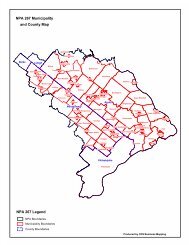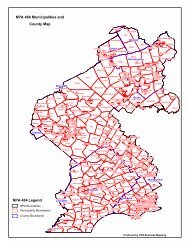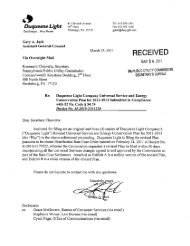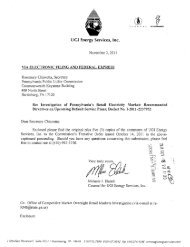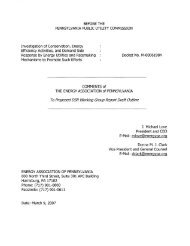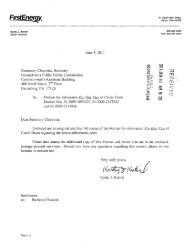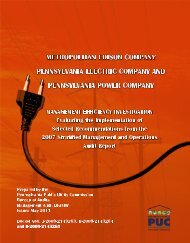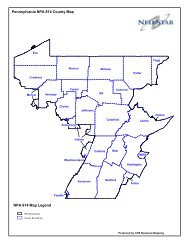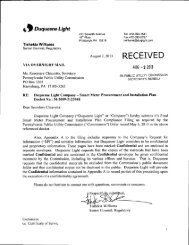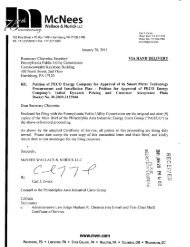2010 Report - Pennsylvania Public Utility Commission
2010 Report - Pennsylvania Public Utility Commission
2010 Report - Pennsylvania Public Utility Commission
You also want an ePaper? Increase the reach of your titles
YUMPU automatically turns print PDFs into web optimized ePapers that Google loves.
percent and an industrial growth rate of 5.4 percent, expecting a return to the 2008 level by 2014.See Figure 36.Penn Power’s 2009 summer peak load, occurring on Aug. 10, 2009, was 901 MW, representing adecrease of 15.2 percent from last year’s peak of 1,063 MW. The 2009-10 winter peak load of 878MW was 1.5 percent lower than the previous year’s winter peak of 891 MW. The actual averageannual peak load growth rate over the past 15 years was 1.6 percent. Penn Power’s forecast showsits summer peak load decreasing from 901 MW in the summer of 2009 to 890 MW in 2011, andthen increasing to 977 MW by 2014, or an overall average annual growth rate of 1.6 percent. Thecurrent forecast for <strong>2010</strong> is 45 MW or 4.8 percent lower than the previous forecast. See Figure 37.Figure 38 depicts the average of deviations in forecasts made one to three years in advance. TablesA13-A16 in Appendix A provide Penn Power’s forecasts of peak load and residential, commercialand industrial energy demand, filed with the <strong>Commission</strong> in years 2000 through <strong>2010</strong>.The electrical systems of Penn Power and the Ohio FirstEnergy operating companies areinterconnected and fully integrated, and for planning purposes are treated as a single electricalsystem. All of Penn Power’s generating facility ownership (1,237 MW) was transferred in 2005.ATSI owns and operates the transmission assets of Penn Power and the Ohio FirstEnergycompanies.For Calendar Year 2009, seven EGSs sold 2,286 GWh to retail customers in Penn Power’s serviceterritory or 53.9 percent of total consumption. Penn Power purchased 2,002 kWh from anindependent power producer in 2009.Penn Power’s Energy Efficiency and Conservation Plan 60 offers a suite of programs for allcustomer segments designed to reach cumulative reduction targets of 143 GWh and 44 MW at atotal cost of $26.6 million.Penn Power is a subsidiary of FirstEnergy, which is a member of RFC and MISO.60 Docket No. M-2009-2112956.42<strong>Pennsylvania</strong> <strong>Public</strong> <strong>Utility</strong> <strong>Commission</strong>



